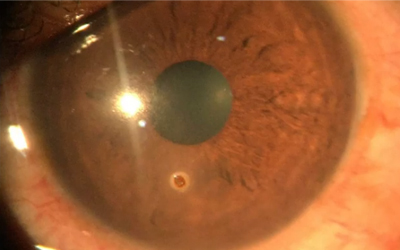A corneal foreign body is an object such as glass, metal, wood, plastic or sand either embedded or superficially adherent to the cornea of the eye.

Some acts about Removal of corneal foreign body:
- The procedure for removal of corneal foreign body is commonly performed in the clinic or emergency department setting.a
- The corneal foreign bodies can cause prolonged pain and lead to complications such as infection and ocular necrosis if not removed in a timely manner.
- Small objects, like eyelashes and sand, are often flush out through blinking and tearing of eyes.
- You should not rub the eye if there is something in it and also wash your hands before examining the eye.
- Some foreign bodies in the eye go away on their own hen they are simple.
- Removal of foreign bodies from the cornea with any appropriate instrument other than a scalpel or needle can be performed by an optometrist.
- Foreign bodies that are small and are not penetrating to the deeper structures of the eye can be treated by an optometrist.
- Foreign bodies that does not involve surgical removal or repair can be treated by an optometrist.
- Foreign bodies can also be treated by an optometrist if the injury caused by the foreign body should be minor and superficial.
- All other foreign bodies that penetrate to deeper structures, causing discomfort, disfigurement, bleeding or surgery required to be treated by an ophthalmologist.
- Pain, discomfort, irritation, watering and redness of the affected eye are some of the symptoms of a foreign body in the eye.
- Blurred vision or, rarely, vision loss or bleeding are possible symptoms of a foreign body in the eye.
- You may also feel something stuck in the eye or scratching while blinking or moving the eyes when there is a foreign body in the eye.

Procedure for Removal of corneal foreign body:
- A first aid measure could remove the foreign body and no further treatment may be necessary in the case of foreign bodies or pollutants, such as an eyelash or dust.
- Medical attention is required after administering first aid measures in other cases.
- A saline solution, distilled water or clean water can be used to rinse and cleanse the eye which can effectively flush out simple foreign bodies and pollutants from the eye.
- You can gently wipe the eye with a cotton tip or tissue. However, rubbing the eyes, taping or dressing the eyes should be avoided.
- Nonpenetrating foreign bodies can be removed by an optometrist or ophthalmologist on an outpatient basis.
- Local anesthetic eye drops can be used to provide pain relief during the procedure.
- A scalpel or needle will not be used by the optometrist or ophthalmologist to remove the foreign body.
- The procedure must be performed by an ophthalmologist if a foreign body requires a needle or scalpel to be removed.
- Antibiotic eye drops and painkillers may be prescribed to prevent or treat infection.
- Antibiotic eye drops are useful in treating minor scratches on the cornea.
- Usually minor injuries heal in three to four days. However, it is important to keep up with follow-up appointments.
- It may still hurt for another one to two days while the corona heals when a foreign body is removed as the cornea is very sensitive.
- A rust ring may have formed if a metal particle was in your eye and you may need a second visit for complete removal.
- An eye patch on your eye may be put by your healthcare provider in some cases which help the healing process.
- You should have another eye exam, if no patch was used and the pain continues for more than 48 hours.
- Don't miss the visit if your eye was patched and you were given an appointment for patch removal and re-exam as it could be harmful to your eye if the patch remains in place longer than advised.
- Contact your healthcare provider immediately if your pain gets worse after removal of the eye patch.
- Increasing eye pain or pain that does not get better after 24 hours, discharge from the eye, redness of the eye or swelling of the eyelids and worsening vision after the procedure seek immediate medical attention.
Home care after the Procedure of Removal of corneal foreign body:
- You can wear sunglasses to help reduce symptoms while the eye is healing.
- Acetaminophen or ibuprofen to control pain, unless another pain medicine was prescribed.
- You should talk with your healthcare provider if you have chronic liver or kidney disease, or if you have ever had a stomach ulcer or digestive bleeding before using these medicines.
- You should not leave the eye patches in place for more than 24 hours, unless advised otherwise by your healthcare provider.
- You should always go for your return appointment for patch removal and re-exam as your eye could be harmed if the patch remains in place longer than advised.
- You should avoid driving a motor vehicle or operate machinery with the patch in place as you will have trouble judging distances with only one eye.
- Use eye drops or ointment as prescribed.
